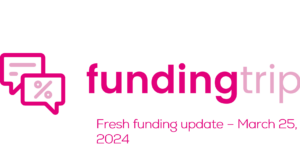Internet has evolved in the blink of an eye. Every now and then there are new updates or new platforms that allow us to go further, but have you ever wondered what will come next? What will revolutionize the Internet as we know it? If you have, you’d probably be interested in knowing that there is a new type of web that may change the future of the Internet. It is not rocket science, it is more complicated: it is web 3. 0.
As honesty is one of Funding Trip’s core values, we do not fool anyone: only a few people are able to fully understand what web 3.0 is, and unfortunately, we do not belong to that privileged group. However, another of our core values is curiosity, so we investigate and do our best to understand every topic, including the most challenging ones such as web 3.0, so we hope this article may help readers better understand what web 3.0 is and why it is thought to be the next stage of the internet.
How it started
The Internet is probably one of the greatest discoveries of all time and it has changed a lot since it was first launched. Focusing on the web per se, it all started in the 90s with web 1.0, which allowed users to read static content, but not to interact in blogs or forums, only to read. To solve this problem, a new web that enabled users to interact in social networks, blogs, or forums was born and, unsurprisingly, it was named web 2.0.
This new web fixed the problem of only participating passively on the Internet since now users could create their own content, but, in turn, it brought another problem: most platforms got controlled by a couple of companies, which means that users’ data can today be used without their consent by these third parties, which makes the web more centralized and less democratic. And consequently, in order to fix this problem, a new web has been created. Can you guess its name? Of course, it’s web 3.0.
How it is going
About 2014, web 3.0 was born with the main purpose of creating a decentralized web where only users were responsible for their own data and this way, avoid that third parties could access and manipulate personal data as they please.
In order to achieve this, web 3.0 stores data in the form of blocks that add to other blocks, forming a chain- that’s why it is called a blockchain network. The more blocks forming the chain, the safest it will be, so through this system web 3.0 intends to provide an alternative way for users to navigate without putting their personal information at risk. Although the web 3.0 is facing important challenges and barriers to become widespread, for some startups, web 3.0 is quite promising, so they are investing in this field and, in turn, some business accelerators are funding these same startups so that they can make progress within this area.
Business Accelerators funding Web 3.0-based startups
More and more business accelerators funding deeptech startups are including Web3 among their verticals. It is the case of accelerators such as Techstars, Creandum, Decasonic or Specialist VC, among many others.
The fact that accelerators consider web3 as a vertical worth of investment means that they envision it as actually the next stage of the internet and thus they are willing to contribute to its development.
Perspective
Maybe right now we think web 3.0 is far from substituting web 2.0, but 10 years ago most of us did not expect the many changes that have occurred, because the Internet evolution is just like that: in the blink of an eye, we are navigating on the Internet using web 2.0, and in the next blink, we might be using web 3.0- and web 4.0 could soon substitute it. We hope the web evolution won’t stop if it is bringing more user freedom and power. And that’s the promise of the Web 3.0.






